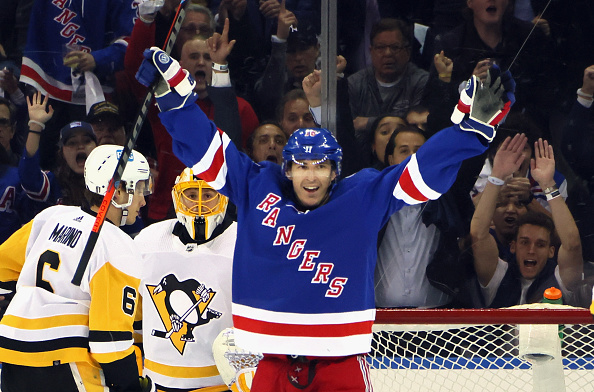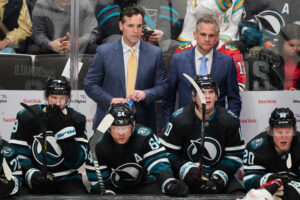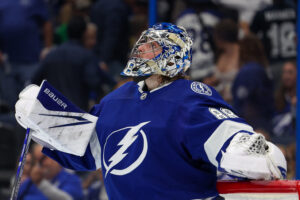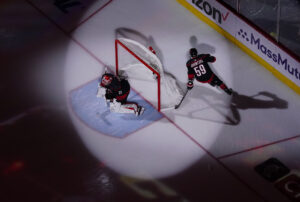Player development seems to always result in more questions than answers. How likely is it for a top pick to pan out? What makes a player a “steal”? Last Word On Hockey will be starting a new series on how to properly develop prospects from all different spots throughout the draft. This week’s piece involves top-10 picks and how they were used early in their careers.
Player developments of top-10 picks
In the span of 2005 through 2015, there were 40 total selections made between fourth overall and tenth overall on forwards playing in North America. Of those 40 selections, three players were given way too much patience and over-developed in juniors and minors. Those players took until their DY+3, DY+4, or DY+5 years before making it to the NHL, respectively. Those players were Ryan Strome, Cody Hodgson, and Michael Dal Colle. In this piece, we will look at Strome and Hodgson.
Player development of Ryan Strome
Strome, drafted fifth overall in the 2011 NHL draft by the New York Islanders, played junior hockey in the OHL with the Barrie Colts and Niagara IceDogs. In his DY-1 season, which was split between the Colts and IceDogs, Strome scored eight goals and 19 assists for 27 points in 61 games played. That was good for 0.443 points per game, ranking 37th out of the aforementioned 40 forwards in DY-1 production. He followed that up with 33 goals and 73 assists for 106 points in 65 games played with Niagara, which was good for 1.631 points per game. That rate ranked seventh out of those 40 forwards in DY production.
Staying in the OHL despite that fantastic production, Strome would score 30 goals and 38 assists for 68 points in 46 games played with Niagara. That was a rate of 1.478 points per game, ranking 13th out of 30 forwards still outside the NHL in DY+1 production. Again, Strome would remain in the OHL, this time scoring 34 goals and 60 assists for 94 points in 53 games, which is 1.774 points per game. That ranked second out of 12 players still outside the NHL in DY+2 production. Strome would finally make it to the professional level following three straight strong seasons.
How was Strome used?
In his first taste of professional hockey, Strome would split between the NHL and AHL. In the AHL, he would play 37 games, scoring 13 goals and 36 assists for 49 points. Playing 37 games in the NHL that same year, Strome would record seven goals and 11 assists for 18 points. He did that while averaging 15:11 of time on ice per game. His advanced analytics also weren’t bad. His even-strength offence goals above replacement (EVO) and even-strength defence goals above replacement (EVD) were both pretty average with what is expected of a rookie. Strome had a decent EVO (2.7) and a below-replacement level EVD (-1.6). Meanwhile, his wins above replacement (WAR) was a solid 0.8, while his goals above replacement (GAR) sat at a pretty good score of 4.3.
With positive underlying numbers in his rookie season at both levels, Strome would see a full-time NHL role, playing 81 games. He averaged 15:24 time on ice per game, scoring 17 goals and 33 assists for 50 points. His analytics were outstanding in all but one category; his EVD was at -2.0. Other than that, his EVO (18.6), WAR (3.2), and GAR (16.6) were outstanding. In fact, of all 40 players looked at, he had by far the best EVO, the third-best WAR and third-best GAR for sophomore seasons.
Strome Regression in Third Season
In his third season, Strome would play 71 NHL games, scoring just eight goals and 20 assists for 28 points, a big step back from the prior season. He averaged almost the same ice time as well, at 15:39 time on ice per game, despite seemingly earning a raise from his fantastic second season. With those counting stats, Strome’s analytics saw a massive decline. Only his EVO was above replacement level (4.5). His EVD (-4.4) was awful, and it dragged his WAR (-0.3) and GAR (-1.3) down below replacement level.
Following his third season, Strome would play just one more season with the Islanders, recording 13 goals and 17 assists for 30 points in 69 games. He would then join the Edmonton Oilers for one full season, plus another 18 games the following year, before being traded to the New York Rangers. He has stayed with the Rangers ever since, playing three straight full seasons with them. Combined between the Oilers and Rangers, Strome has played 363 games, scoring 85 goals and 146 assists for 231 points. Safe to say, despite the over-development in the OHL and the rough third season, Strome turned out just fine. Sure, he may not be what you want out of a top-five pick, but he’s been a lock at the NHL level since his first full NHL season.
Player development of Cody Hodgson
Hodgson was drafted 10th overall by the Vancouver Canucks in the 2008 NHL entry draft and played junior hockey with the Brampton Battalion of the OHL. In his DY-1 season, Hodgson scored 23 goals and assists for 46 points in 63 games. That wound up being 0.73 points per game, ranking 28th out of those 40 forwards in DY-1 production. He followed that season up with 40 goals and 45 assists for 85 points in 68 games while wearing the “C” on his jersey. That was good for 1.25 points per game, ranking 23rd in DY production.
Staying in the OHL, Hodgson remained the captain of Brampton and played 53 games, scoring 43 goals and 49 assists for 92 points, scoring at a 1.736 point per game pace. That ranked sixth among the 30 forwards outside of the NHL in DY+1 production. Despite this, he would play another season in the OHL with Brampton. No longer the captain, Hodgson would score eight goals and 12 assists for 20 points in just 13 games. Despite the shortened season, he recorded 1.538 points per game, ranking fourth amongst the 12 forwards still outside the NHL in DY+2 production.
An AHL season for additional player development
Hodgson would be thrust into AHL action following the tough OHL season in his DY+3 season. In his first taste of AHL action, Hodgson would score 17 goals and 13 assists for 30 points in 52 games. He would also see an eight-game stint in the NHL, scoring just one goal and assist for two points. His AHL point pace sat at 0.577 per game, ranking second out of five players still outside of the NHL in DY+3 production.
How was Hodgson used?
Hodgson would play 63 games with the Canucks, scoring 16 goals and 17 assists for 33 points, averaging 12:44 time on ice per game, before being traded. Landing with the Sabres, his ice time would jump up to 17:16 time on ice per game. He would score three goals and five assists for eight points in 20 games. Overall, he averaged 13:49 time on ice per game, scoring 41 points across 83 total games. He even got Calder trophy votes, landing eighth in the voting, according to Hockey-Reference. His analytics were solid, with a 6.0 EVO, 1.4 WAR and 8.1 GAR. His EVD was the only stat that was below replacement level (-1.3).
In his second season, now officially with the Buffalo Sabres, he would play 19 AHL games and 48 NHL games. Then, in the AHL, with the Rochester Americans, Hodgson scored five goals and 14 assists for 19 points. In the NHL, he scored 15 goals and 19 assists for 34 points, a really solid stat line. He did that while averaging 18:24 time on ice per game, a really solid role for a second-year player. His analytics did take a small step back, with his EVO the only stat improving (6.2). However, his EVD (-2.7), WAR (0.8) and GAR (4.1) all went down.
Hodgson continues decline
In his third NHL season, Hodgson would see 72 NHL games and averaged 18:09 time on ice per game. In that role, he would score 20 goals and 24 assists for 44 points. Again, a solid stat line, but his analytics were pretty bad. His EVO (0.1) barely stayed above replacement level. All the other analytics were below replacement level, with his EVD being horrendous (-7.3), leading to his WAR (-0.9) and GAR (-4.8) being dragged through the mud.
Hodgson would see just two more NHL seasons with the Sabres and Nashville Predators. Playing 117 games, scoring nine goals and 12 assists for 21 points. He would average just 12:09 time on ice per game in that time. He would play an additional 14 AHL games with the Milwaukee Admirals, scoring four goals and seven assists for 11 points. Those 14 AHL games would mark the end of the former top-10 selection’s career. Player development was not a problem, as the Sabres gave him top-line minutes to try and get him to that next level.
Back injury and muscle disease led to early retirement
Hodgson had dealt with a back injury early in his career, which is what led to his shortened OHL season. But his back ultimately didn’t make a difference in the long run to make this big of a decision. Instead, it was a rare form of muscle disease, called ryanodine receptor 1 (RYR-1). Trouble breathing, blackouts and full-body shakes and muscle tightness led to a visit to his doctor. He was diagnosed and could no longer play hockey at a high level. An unfortunate end to what was once a very promising career with a solid player development path.
Junior league stats via Elite Prospects, NHL stats via Hockey Reference, NHL analytics via Evolving Hockey






